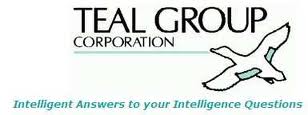
With both military and civil Unmanned Aerial Systems (UAS) continuing as the most dynamic growth sectors of the world aerospace industry this decade, Teal analysts last week issued their latest military UAS market analysis on Air Day of AUVSI’s Unmanned Systems DEFENSE, taking place October 25-27, 2016 at The Ritz-Carlton in Pentagon City.
New unmanned combat aerial vehicle programs in a growing number of countries, including the US, promise to drive more than a tripling of the military UAS market over the next decade.
Teal Group’s 2016 military market study estimates that UAV production will soar from current worldwide UAV production of $2.8 billion annually in 2016 to $9.4 billion in 2025, totaling $69.7 billion in the next ten years. Military UAV research spending would add another $26 billion over the decade. (For further details and study availability, contact the respective Teal sales representative in your area at http://www.tealgroup.com/).
“The market for UAVs looks very strong, increasingly driven by new technologies, the next generation of unmanned combat systems, and a growing number of countries adopting UAVs into their militaries,” said Philip Finnegan, Teal Group’s director of corporate analysis and an author of the study.
“The Teal Group study predicts that the US will account for 77% of total military worldwide RDT&E spending on UAV technology over the next decade, and about 52% of the military procurement,” said Teal Group senior analyst Steve Zaloga, another author of the study. The larger, higher value military systems procured by the United States help drive the relative strength of the US market over the decade.
The 14th edition of the sector study, 2016 World Military Unmanned Aerial Vehicle Systems Market Profile and Forecast, examines the worldwide requirements for military UAVs, including UAV payloads and companies, and provides ten-year forecasts by country, region, and classes of UAVs.
Teal Group analysts already cover the UAV market in their World Missiles and UAV Briefing competitive intelligence service, which examines the UAV market on a program-by-program basis. Sensor payloads are also treated in Teal’s Military Electronics Briefing service.
The military UAS sector study examines the UAV market from a complementary perspective, namely national requirements, and includes both a comprehensive analysis of military UAV system payloads and key military UAV manufacturers.
Military UAV Payloads
The 2016 military UAS study provides forecasts for a wide range of UAV payloads, including Electro-Optic/Infrared Sensors (EO/IR), Synthetic Aperture Radars (SARs), SIGINT and EW Systems, and C4I Systems, forecast to nearly double in overall value from $3.5 billion in FY16 to $6.3 billion in FY25.
Steady growth will occur in the “default sensor” EO/IR market, following up-and-down funding in recent years, as several legacy endurance UAV sensor programs ended. Teal forecasts a sudden near-term rise from $985 million in FY16 to $1.7 billion in FY21, led by the first chunk of funding, for transferring manned U-2 ISR aircraft sensors to Global Hawk, and by major HD upgrade programs for both Reapers and Gray Eagles.
Also, new in the study this year is a more comprehensive treatment of current classified and future follow-on sensor programs.
According to Dr. David L. Rockwell, Teal’s lead electronics analyst, “It is vitally important to forecast these programs, as they make up more and more of the market available to manufacturers.” He notes further that:”Speculative ‘uncontracted’ forecasts for both the near-term and the out-years are intended to give early warning of what we see as the most likely (or, sometimes, absolutely necessary) programs that may not yet be in the budgets or under public discussion, or announced by international customers – to allow Teal’s clients to plan ahead and prepare offerings before the RFPs (requests for proposals) are already out.”
Along with EO/IR, comprehensive coverage of radio frequency (RF) systems are included, as these supplant EO/IR capabilities in some markets and next-generation UAVs at all scales require much more sophisticated – and expensive – sensors.
The UAV radar market is forecast to grow from $993 million in FY16 to $2.0 billion in FY25, with SIGINT and Electronic Attack (EA) markets to grow from $731 million to $1.6 billion (with a 17.3% CAGR from FY18 to FY22 to buy forecast UCAV systems).
“The emphasis on – and funding for – different sensor types is already changing as geopolitics evolve back to Anti-Access/Area Denial (A2/AD) threats from near-peer opponents in Asia and Eastern Europe,” according to Dr. Rockwell.
Military UAS Companies
The military UAS study also includes a UAS Manufacturers Market Overview that reflects the worldwide UAS market “again continuing as one of the prime areas of growth for defense and aerospace companies,” said Finnegan. The new study reflects the rapid growth of interest in the UAV business, by covering almost 50 U.S., European, South African and Israeli companies, and reveals the fundamental reshaping of the industrial environment, as military UAV technology proliferates worldwide.
As prime contractors and small companies compete in the dynamic UAV market, they are adopting widely different strategies. “Our overview tracks the widely varying approaches being taken by these key companies, ranging from outright acquisitions to teaming arrangements and internal development of new UAV systems,” said Finnegan.
This year’s military study has a companion volume on civil government, commercial and consumer UAVs. The rapid growth in those markets required a new study analyzing the varying dynamics of those markets.
The 2016 military UAS edition includes UAV market forecast spreadsheets, permitting data manipulation and offering a powerful strategic planning mechanism.
Daphné Savard occupe le poste d’administratrice du site ou webmestre ainsi que celui de responsable des relations avec les annonceurs et les lecteurs.
Commentaires